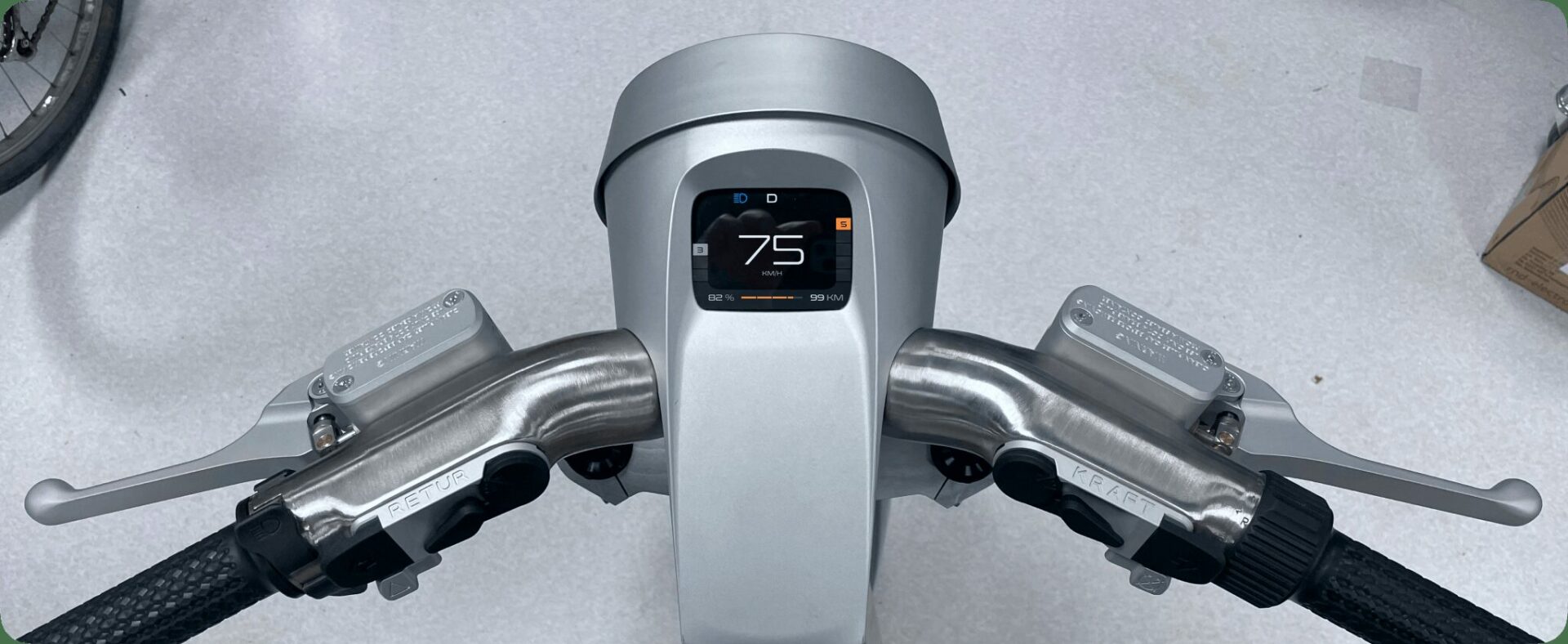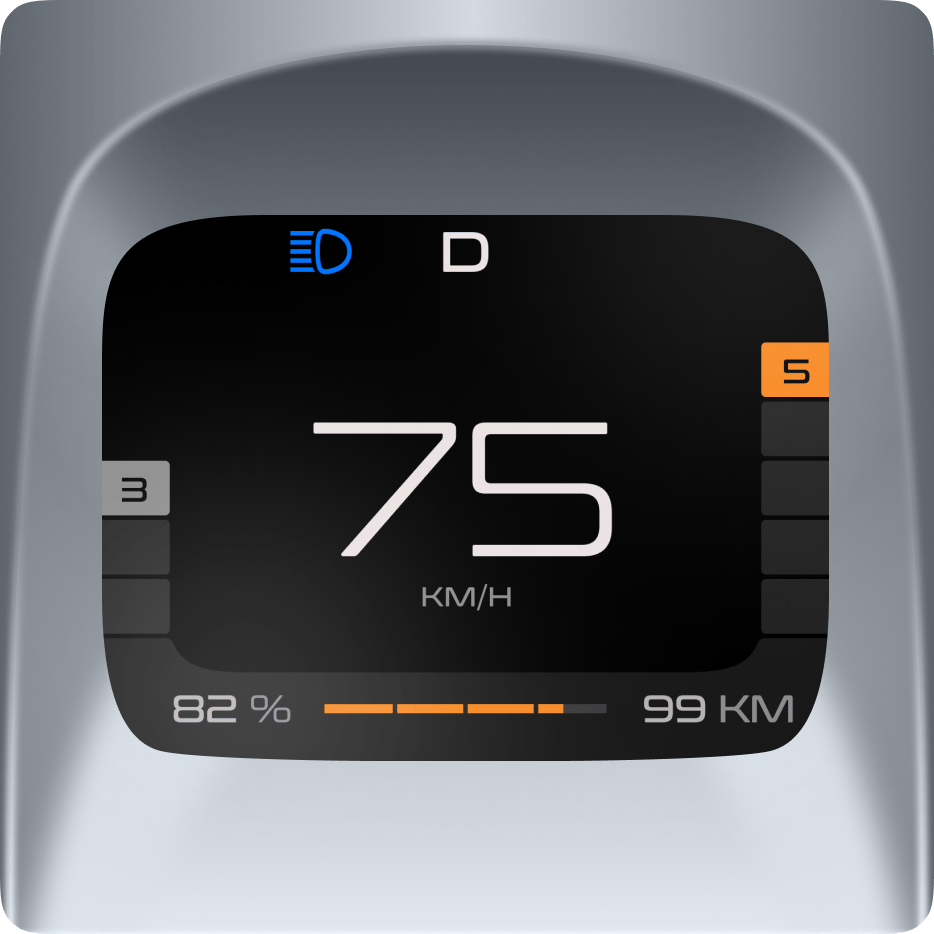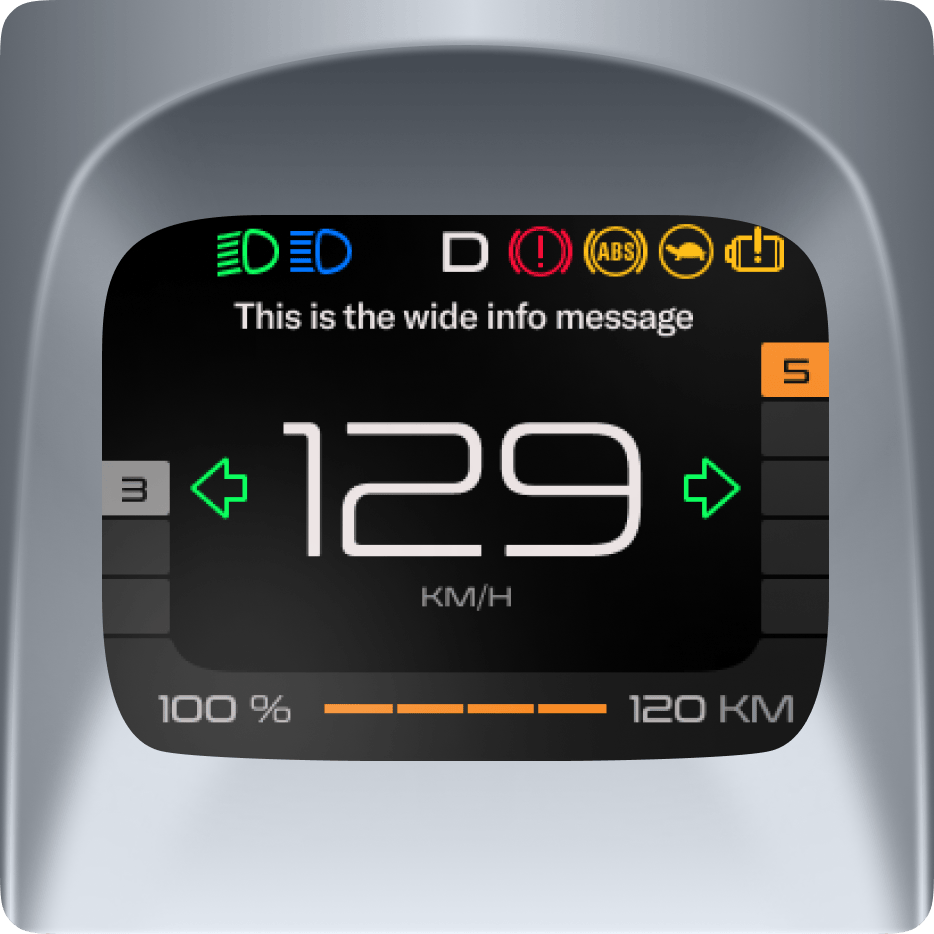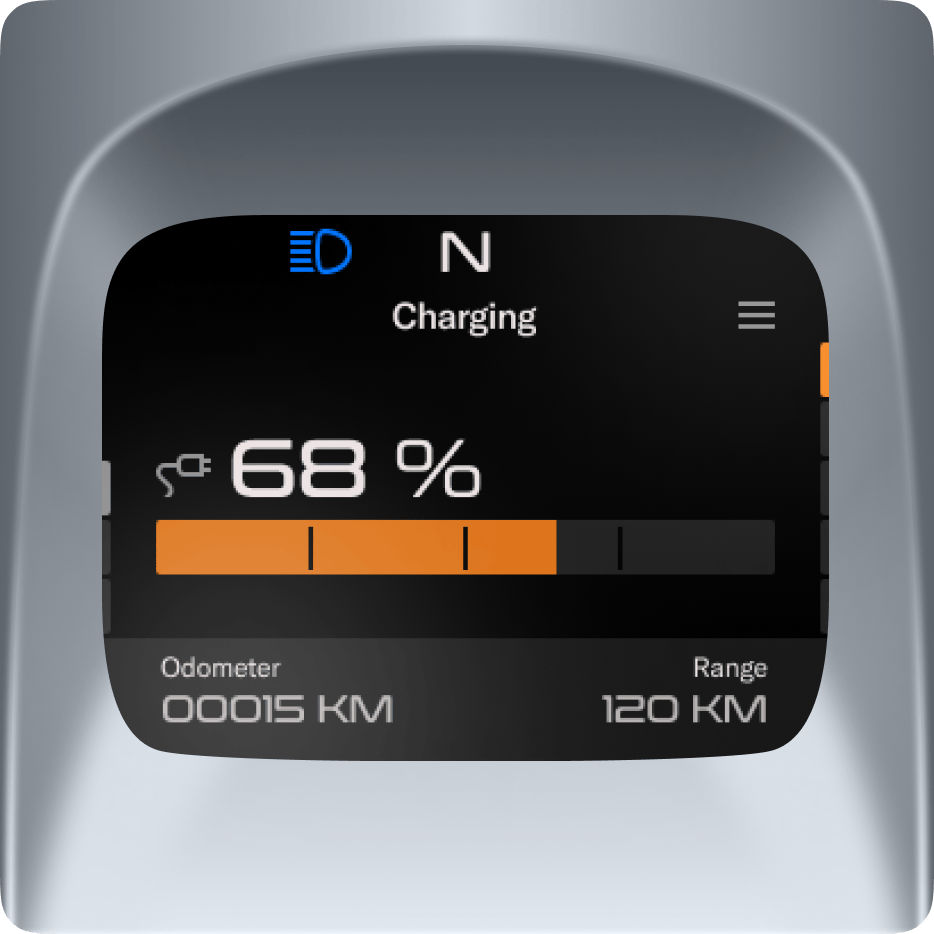Instrument cluster design for Stilride’s electric motorcycles
A minimalist and highly functional HMI for a premium electric motorcycle.
Services
HMI design
Technology
Figma
Designing an innovative vehicle
Stilride, a Swedish tech company that offers sustainable innovations, was looking for a development partner to design a practical and simplistic Human-Machine Interface (HMI) for its premium electric motorcycle. The interface needed to align with the bike’s design aesthetic and provide a distraction-free riding experience.
The company selected Bamboo Apps due to its extensive experience in vehicle HMI design, and particularly in creating instrument clusters and digital cockpits.
Delivering a sleek-looking prototype
The Bamboo Apps team onboarded the project and commenced studying its specifications. Eventually, the team came up with a three-step project plan:
Step 1. Discovery
- Conduct in-depth interviews with Stilride to understand the company’s vision and target audience.
- Perform competitive analysis to identify industry best practices and unique opportunities.
- Facilitate a one-day Design Thinking Workshop to generate ideas and refine the project scope.
Step 2. Prototyping
- Develop design concepts that are aligned with the project goals.
- Create an information architecture to organize the content and interactions on the HMI.
- Build interactive prototypes to test usability and gather feedback.
Step 3. Refinement
- Establish a comprehensive app UI style guide to ensure consistency across all screens.
- Develop user stories to define the functionality of each screen and interaction.
- Iterate on the designs based on user testing and feedback.
Working on the bike’s instrument cluster
Stilride’s cockpit features a touch screen and handlebars with control buttons. The handlebars are designed to maximise drive quality and ergonomics, and feature control elements, such as throttle, horn, hazard warning, low/high beam, high beam flash, turn signals, engine shut off, RETUR and KRAFT switches, and gear selector.
Bamboo Apps worked extensively on Stilride’s touch screen HMI. The team had to make sure the design correlated with the motorcycle’s concept and functionality.
Vitals
The intelligent display offers a discreet yet practical view of the motorcycle’s essentials. In the middle, there is a speed-focused area, followed by a flexible informative area with bike vitals and a static area. The flexible area features warning signals and other indicators that are visible only upon activation.
These are:
- High/low beam
- Brake failure
- ABS warning light
- Limited performance mode
- Turn left/right
- Cord connect
- Check engine
- Check battery
- Odometer
- Drive modes.
The bike’s instrument cluster also allows for downloading and installing OTA updates.
RETUR & KRAFT driving modes
To control the driving experience, Stilride features two driving modes, RETUR (regenerative braking) and KRAFT (power). These modes are visible on the instrument cluster’s display.
RETUR slows the bike down using the motor braking. KRAFT permits the driver to change the power and throttle response while operating a vehicle. RETUR and KRAFT can work together to modify performance and prolong battery life.
The design concept also includes navigation with smartphones. It is not available in the first generation of bikes and can be possibly added in Gen 2.
Working alongside an award-winning designer
Throughout the project, the Bamboo Apps team collaborated closely with Stilride’s CEO and an award-winning designer, Tue Beijer. The team expressed excitement about working with such a prominent expert in the field. Bamboo Apps and Stilride rapidly found a common ground for working together. The team was also very conscious about the design it was creating, since it had to seamlessly integrate with the existing motorcycle design, which had already received numerous awards for its aesthetics.
Throughout the development, the primary challenge was to maintain full functionality while simultaneously achieving a minimalist design. Some solutions were refined after on-bike testing to improve readability and user experience.
Bamboo Apps delivered nine design concepts and selected a primary direction, refining the chosen design and working on additional screens. Ultimately, the designs were finalised for development.
The Bamboo Apps team included a project manager and a UX/UI lead designer. They followed the initial three-step plan and the project went on to be a success.

A futuristic concept waiting for mass production
The client was satisfied with the final design and all the questions were addressed. Stilride featured the design on its official website. Bamboo Apps completed its work on the project. For Stilride, the next stage is the implementation of the final design into mass production.







